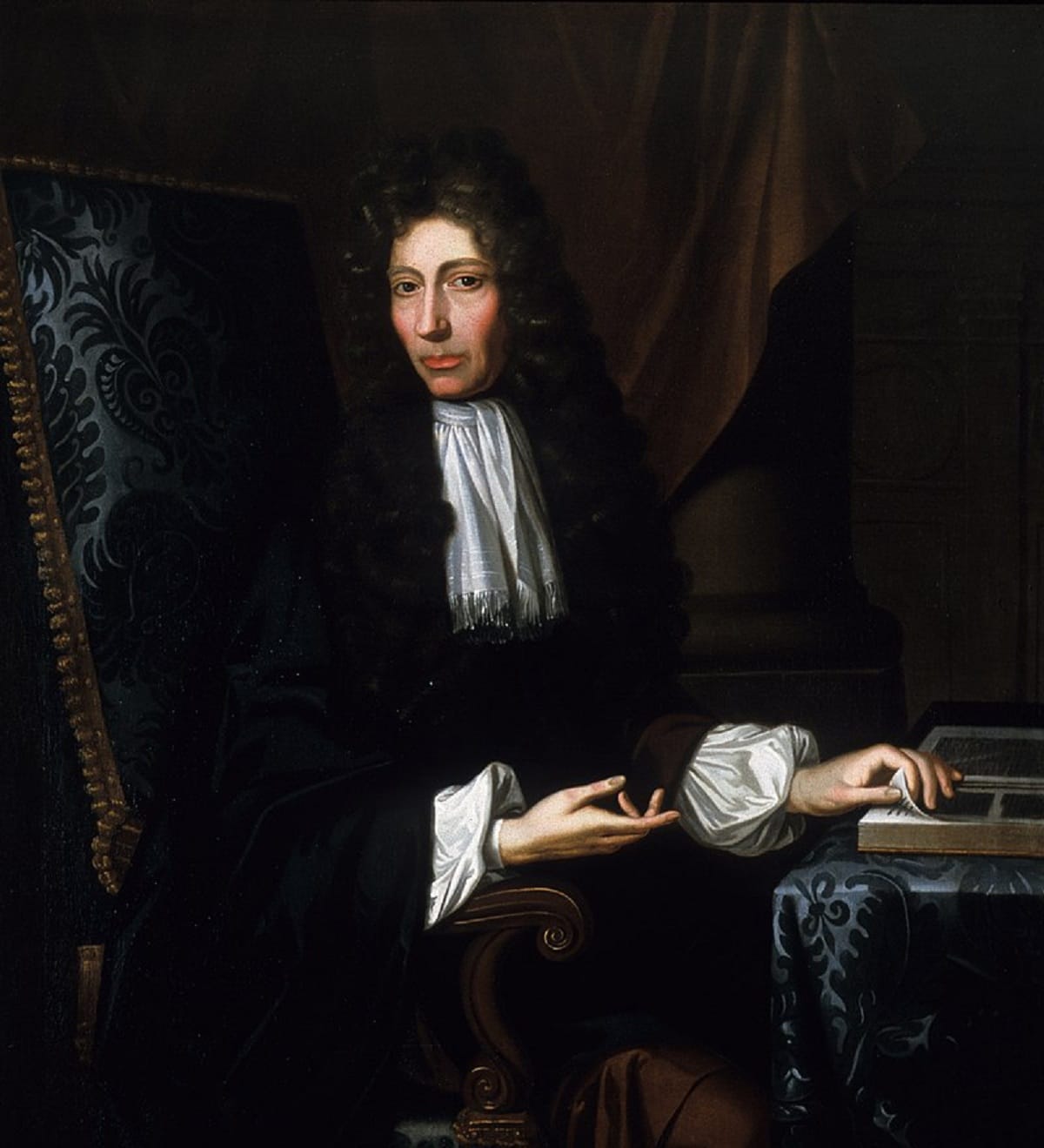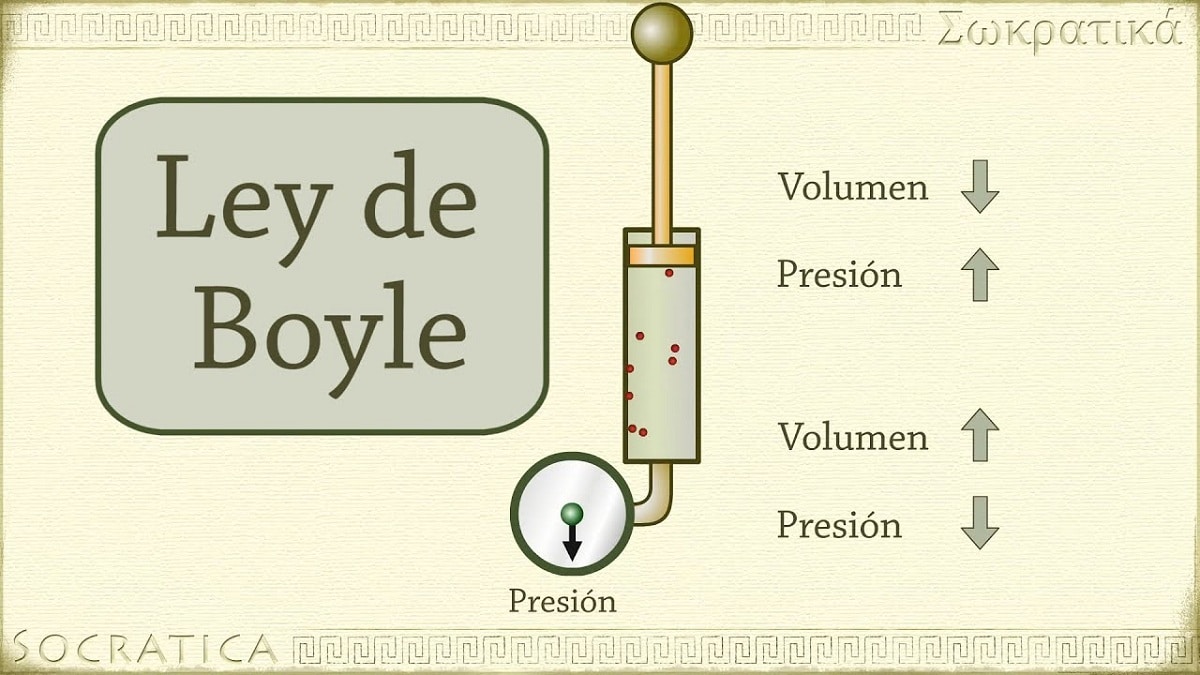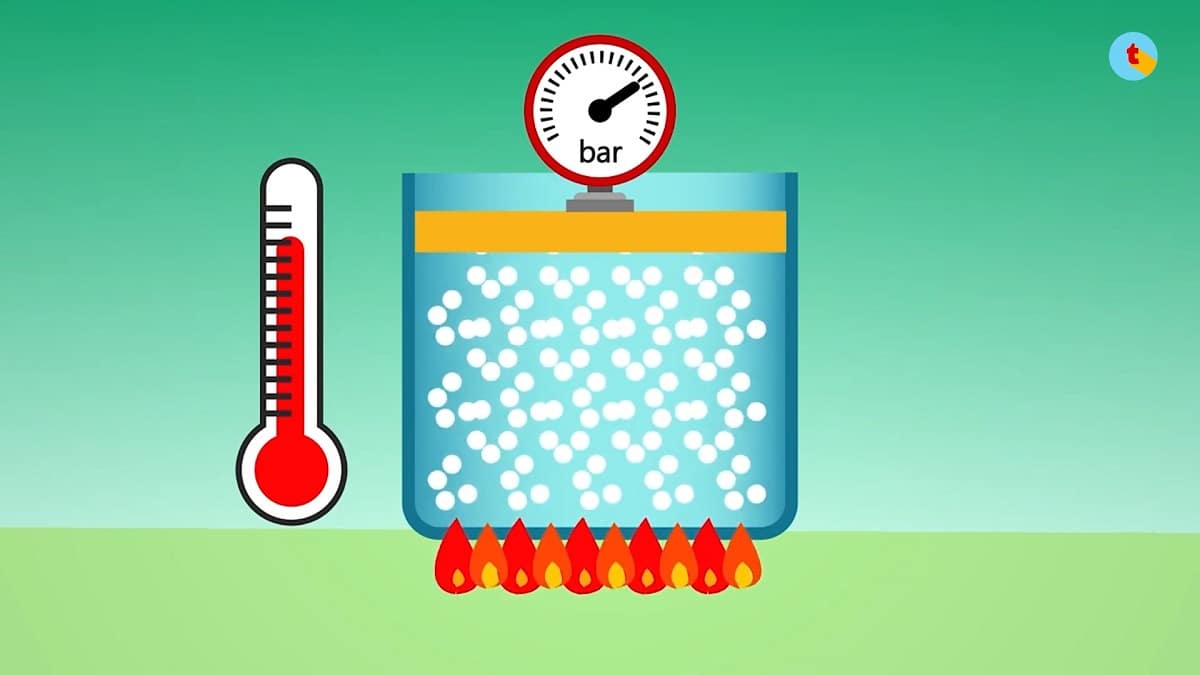
La Boyle's Law it was discovered by Robert Boyle in the XNUMXth century and laid the foundations to explain the relationship between pressure and volume present in gases. Through a series of experiments, he managed to show that if the temperature is constant, a gas reduces its volume when subjected to more pressure, and increases in volume if the pressure is reduced.
In this article we are going to tell you everything you need to know about Boyle's law, its characteristics and importance.
Key features

In 1662, Robert Boyle discovered that the pressure exerted on a gas is inversely proportional to its volume and number of moles at constant temperature. In other words, if the pressure applied to a gas is doubled, the same gas will be compressed and its volume will be halved.
As the volume of the container containing the gas increases, the distance the particles must travel before colliding with the container walls also increases. This increase in distance allows the frequency of the shocks to decrease, so the pressure on the wall is less than before when the volume was smaller.
Boyle's Law was first discovered in 1662 by Robert Boyle. Edme Mariotte was another scientist who thought and came to the same conclusions as Boyle, however, Mariotte did not make his work public until 1676. That is why in many books we find this law called Boyle and Mariot's Law Boyle-Mariot's Law, also known as Mattut's Law, developed by the British physicist and chemist Robert It was formulated independently by Boyle and the French physicist and botanist Edmé Mattout.
It refers to one of the laws that relate the volume and pressure of a gas to a certain amount of gas maintained at a constant temperature. Boyle's Law states the following: The pressure exerted by a force is physically inversely proportional to the volume of gaseous matter as long as its temperature remains constant. Or more simply, we can interpret it as: at a higher constant temperature, the volume of a fixed mass of gas is inversely proportional to the constant pressure it exerts.
Experiments and applications of Boyle's law

To prove the theory of Boyle's Law, Mariot was in charge of introducing gas into a cylinder with a piston and was able to verify the different pressures that were created as the piston descended. It is inferred from this experiment that as the volume increases, the pressure decreases.
Boyle's law has many applications in modern life, among which we can mention for example diving, this is because the diver has to expel the air from his lungs when ascending because it expands when the pressure decreases, if not doing so can cause tissue damage.
It is found in all equipment that uses or is powered by pneumatic power, such as robotic arms that use components such as pneumatic pistons, actuators, pressure regulators, and pressure relief valves.
Gasoline, gas or diesel engines also use Boyle's law during internal combustion, because the first time air enters the cylinder with volume and pressure, the second time it reduces volume by increasing pressure.
Cars have airbag systems that work by expelling a certain amount of air or gas from a chamber that reaches the outside airbag, where the pressure decreases and the volume increases maintaining a constant temperature.
Boyle's Law is very important today because it is the law that speaks to us and explains the behavior of gases. It definitely explains that the pressure and volume of a gas are inversely proportional to each other. Therefore, when pressure is applied to a gas, its volume decreases and its pressure increases.
ideal gas model

The Boyle-Mariotte law applies to so-called ideal gases, a theoretical model that greatly simplifies the behavior of any gas, assuming:
- gas molecules they are so small that it is not necessary to think about their size, especially considering that this is much smaller than the distance they travel.
- In addition, the molecules barely interact, except when they collide very briefly, and when they do, the collision is elastic, so both momentum and kinetic energy are conserved.
- Finally, suppose that this kinetic energy is proportional to the temperature of the gaseous sample, that is, the more agitated the particles, the higher the temperature.
Light gases, regardless of their identity, follow these guidelines very strictly under standard conditions of temperature and pressure (ie: 0ºC and atmospheric pressure (1 atmosphere). For these gases, the Boyle-Mariotte law describes their behavior very precisely. .
Since P∙V is constant at a given temperature, if the pressure of the gas changes, the volume changes so that the product remains the same, so in two different states 1 and 2, the equality can be expressed as follows :
P1∙V1 = P2∙V2
Then knowing one state, plus a variable from the other state, you can know the missing variable by removing it from the Boyle-Mariot law.
History of Boyle's Law
British chemist. Pioneer of experiments in the field of chemistry, especially in the properties of gases,
Robert Boyle's thesis on the behavior of matter at the particle level was a precursor to the modern theory of chemical elements. He was also a founding member of the Royal Society of London.
Robert Boyle was born into a noble family in Ireland and attended the best English and European schools. From 1656 to 1668 he served as Robert Hooke's assistant at Oxford University, collaborating with him on a series of experiments that determined the physical properties of air and how it burns, breathes, and transmits sound.
The results of these contributions were collected in their «New physical-mechanical experiments on the elasticity of air and its effects» (1660). In the second edition of this work (1662), he revealed the famous property of gases, the Boyle-Mariotte law, which stated that the volume occupied by a gas at constant temperature is inversely proportional to its pressure. Today it is known that this law is fulfilled only when the theoretical ideal behavior of gases is accepted.
I hope that with this information you can learn more about Boyle's law, its characteristics and applications in the world of science.